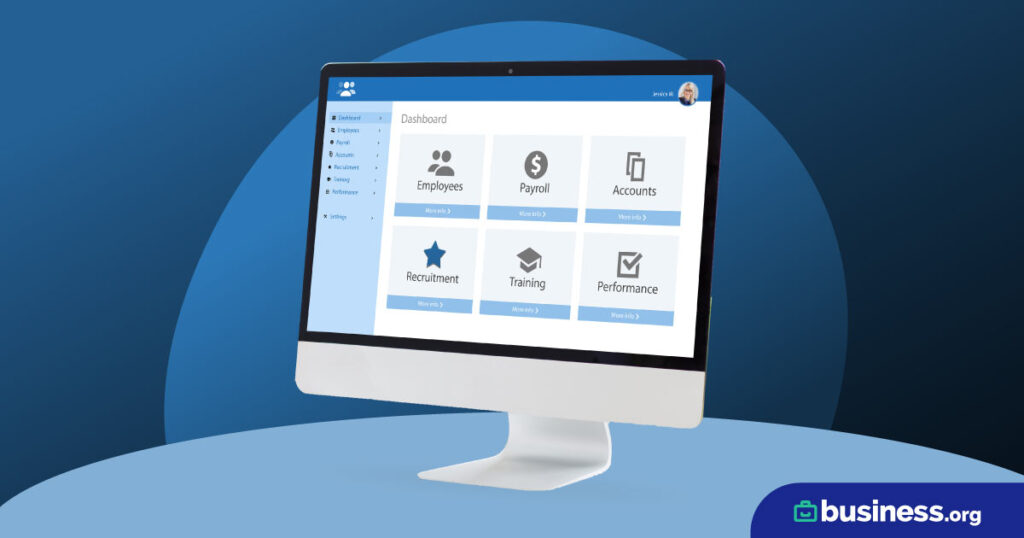We are committed to sharing unbiased reviews. Some of the links on our site are from our partners who compensate us. Read our editorial guidelines and advertising disclosure.
Free 401(k) Calculator
The future often feels uncertain, but at least in terms of retirement, it doesn't have to be. Instead of guessing if you're saving enough money to retire on time, use a 401(k) calculator. This free tool helps estimate your 401(k) account's balance at retirement based on your employee contributions, matched employer contributions, investment rate of return, and time to retirement.
Information you need for a 401(k) investment calculator
To get a 401(k) future value projection, enter the following personal and financial information:
- Your current age
- Your planned retirement age
- Your (pre-tax) annual salary or expected yearly wages
- Your estimated annual salary increase
You also need the following info about your existing 401(k) account:
- Your 401(k) account's current balance
- The percentage of your annual salary or wages you contribute to your 401(k)
- Your 401(k) account's annual rate of return, which depends on the type of investments you make with your account
Finally, if your 401(k) is sponsored by your job, you'll need these crucial employer details too:
- Your employer's matching contribution, or the percentage of your contribution that your employer promises to match (for instance, your employer might commit to matching 50% of your own contribution)
- Your employer's maximum annual contribution, or the maximum percentage your employer will commit to matching (for instance, you might contribute 15% of your wages to your 401(k), but your employer might commit to match up to just 5% of your salary)
You should be able to find the employer information above in the documents you received when setting up your employer-sponsored 401(k). Some companies include this info in their employee handbooks as well. Still can't find the information? You'll likely need to get in touch with your company's HR department.
By signing up I agree to the Terms of Use and Privacy Policy.
Additional 401(k) retirement calculator terms and definitions
The following terms don't show up on the calculator above, but they're important to understand, especially if you're thinking of changing your contribution amount.
Contribution limit
Because 401(k) contributions are tax advantaged, meaning you don't pay taxes on them until you start withdrawing funds, the IRS limits the amount of money you can add to your 401(k) each year. For 2020, that annual contribution limit is $19,500. Employees over the age of 50 are allowed to make an additional contribution of $6,500—if that describes you, your maximum limit is actually $26,000.
Bear in mind that employer-matching contributions do not count toward your contribution limit. For instance, if you contribute the maximum amount (for employees under 50) of $19,500 and your employer offers a 50% contribution match, you'll end the year with a contribution total of $29,250.
Required minimum distribution (RMD)
A required minimum distribution (RMD) is the amount the IRS requires you to withdraw from your 401(k) account each year after retirement. The IRS requires most retirees to start making these minimum withdrawals at age 72. You can use the IRS's RMD worksheet to calculate how much you'll be required to withdraw each year.
Annual compounded rate
Like most retirement calculators, this particular calculator assumes that you're making compound interest on your 401(k) investments each year. With compound interest, you don't just earn interest on your original deposit (a.k.a. principal): you also earn interest on the interest you accrue.
The annual compounded rate of return is a little tricky to calculate, and like most investment calculations, it can't account for the market's (sometimes extreme) fluctuations. As a result, your actual rate of return might be much different than the estimated percentage you entered in the calculator above.
Unfortunately, you can't do much to change that—the stock market is what it is, and every investment is a gamble of sorts. Just know that the best a calculator can do is give you an estimate, which isn't the same as a guaranteed payout. If you're not completely sold on your current 401(k) investing decisions, we recommend chatting with a financial planner or advisor.
401(k) FAQ
What is the IRS’s maximum annual contribution limit?
For the 2020 tax year, employees are allowed to contribute up to $19,500 to a 401(k). For employees over 50, the additional contribution limit is $6,500. Matching employer contributions do not count toward your contribution limit.
What is the typical retirement age?
The US retirement age is based on when you're allowed to start receiving Social Security benefits without any reductions. The earliest anyone can start receiving Social Security benefits is 62, and if you were born in 1960 or later, you can't start receiving unreduced benefits until you're 67. If you're not sure when you can retire for full benefits, enter your date of birth on the Social Security Administration's retirement benefits page.
How much money should I have in my 401(k)?
Per USA Today, most US adults can maintain their current standard of living after retirement if they have around 80% of their previous paycheck each year.1 Hopefully, Social Security benefits will get you about 40% of the way there,2 which means you'll want to plan on having at least 40% of your annual paycheck saved for each year of retirement.
In the best-case scenario, you'll have saved the equivalent of one year's salary by age 30, three years' by 40, and five years' by 50.2 Run some calculations and see what that number breaks down to for you and what you'll need to save to meet that goal. If you're already past those ages and haven't hit the recommended marks, don't punish yourself: the last 20 years have been nothing if not economically tumultuous, and no matter how old or young you are, it's never too late to start saving.
Do I pay taxes on 401(k) contributions?
Not right away. Tax payments for income earned and deposited in a 401(k) are deferred until you withdraw funds from the account. This means 401(k) contributions lower your taxable income for the year. Depending on how much you contribute, you might be bumped into a different tax bracket.
If you don't want to defer taxes on retirement funds, you should choose a Roth IRA instead of a 401(k). Your annual taxable income will be higher than if you invest with a pre-tax 401(k), but you won't incur taxes on the interest you earn over time. A financial planner or accountant can help you decide which type of retirement account is right for you.
The takeaway
With the right tools—including a 401(k) retirement planning calculator—you can both set clear retirement goals and maximize your chances of meeting those goals.
Want to get on top of budgeting, saving, and planning for retirement? Scan our list of the year's best financial planning apps, a few of which include retirement trackers.
Disclaimer
At Business.org, our research is meant to offer general product and service recommendations. We don't guarantee that our suggestions will work best for each individual or business, so consider your unique needs when choosing products and services.
Sources
1. USA Today, "Retirement Planning: How Much Should I Have Saved in My 401(k) at Age 40?," May 2018. Accessed July 14, 2020.
2. Intuit, "How Much Should I Have in My 401K? Balance by Age," September 2019. Accessed July 14, 2020.




